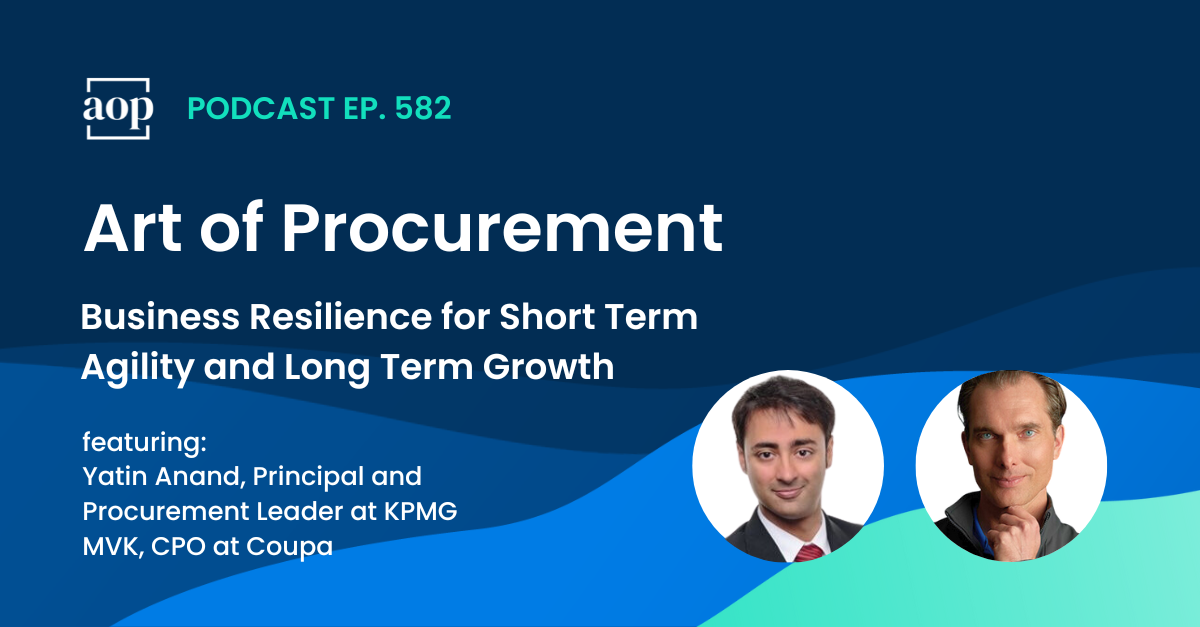
Everyone in a leadership position today is in the process of getting their organization up to speed after a year of disruption and repositioning their efforts to drive what the company needs to get back on track. A sense of urgency is felt across companies and industries, but not all leaders will be equally effective at turning it into growth.
This dynamic is dramatically changing how procurement buys and sells services and how they partner with suppliers to achieve not only competitive advantage, but operational continuity as well.
At Mastermind LIVE Spring, Globality and Art of Procurement brought together an exceptional panel of procurement executives to discuss this challenging moment and how we can ensure this collective sense of urgency converts into growth as well as bottom line health. The panel included Adam Brown, Senior Manager of Procurement Transformation & Head of the Procurement Garage at BT; Amy Fong, Vice President, Sourcing and Vendor Management at Everest Group; Keith Browning, Managing Director, Supply Chain Management for Delta Air Lines; Keith Hausmann, Globality’s Chief Revenue Officer; and Reunan Varene, Global Head of Procurement at Dropbox.
Their focus and vision for procurement were primarily focused around three areas: varying perspectives on what ‘growth’ really means, developing an expanded understanding of supplier collaboration, and the changes that must be made for procurement to scale.
Driving Agility to Deliver Growth
Procurement has always wanted to have a direct impact on the top line, but we may have had too narrow of a focus in the past. Rather than giving up on savings as a bottom line factor, we should think about them as procurement’s operational channel for “extracting more value from spend and consciously reinvesting it in growth,” as Keith Hausmann put it. But continuing to deliver savings doesn’t mean nothing changes; the time has come to reimagine procurement’s value proposition and reframe their capabilities and results accordingly.
In that same spirit, Adam Brown challenged attendees to grow their impact by better leveraging the capabilities of each individual working in procurement. “We’re paying people for their brains,” he pointed out. “How can we remove the mundane to enable them to do something incredible, and how can we also grow the capabilities of the function so we can better serve our customers?” The answer to that question will be different for each team and company, but asking it – and making it a priority to answer – holds the key to procurement’s path forward.
The Top and Bottom Line Connect Through Suppliers
One learning from 2020 that will resonate in procurement for some time is the true nature of their relationships with suppliers. Many organizations have talked about supplier relationship management and collaboration, but only a small number have actually achieved those partnerships. Keith Browning spoke about how Delta chose to treat suppliers through the airline industry’s difficulties. As he said, “even though we weren’t spending as much money and we were trying to eliminate or suspend contracts, we didn’t want to beat our suppliers up on price. We knew they had to stay in business too.”
Keith Hausmann also expressed the need for a relational approach to working with suppliers, and he connected it to the objective of contributing to growth. “Relationships in business are relationships, and we can’t bifurcate them,” he said. “If we are going to invest in a supplier partnership, why wouldn’t we equally think about them as a potential customer?” With this point of view, it becomes clear very quickly that there is a direct line between supplier relationships and corporate growth.
Growing Procurement’s Ability to Scale
With all of the work to be done, procurement has to find new ways to scale without adding headcount. Reunan Varene’s vision for scaled procurement includes two factors: automation and self-service. Dropbox’s procurement team is “laying the foundation for stakeholders to experience procurement in a way that’s frictionless for them and that allows them to get the value they need from the supply chain.” Their organization is focused on achieving that vision jointly through technology and people.
For Adam Brown, procurement’s ability to scale is based on the democratization of sourcing. “You can now self-serve things you never anticipated doing before. It’s hugely empowering to the business.” As he rightly points out, procurement can not empower themselves without first doing the same for the business.
In my opinion, there are many ways procurement can impact top-line growth. We can enable savings reinvestment and facilitate supplier-led innovations, or empower sales and marketing to overcome objections in the sales process and increase customer success. Without question, procurement’s ability to execute is limited more by our imagination, confidence, and willingness to take measured risks than it is by a lack of enabling technologies or skill shortages.
The effects of the COVID-19 pandemic, the movement for greater sustainability and inclusion across the value chain, and the unstoppable digitization of processes have accelerated a transition underway for years in a matter of months. Transformational procurement executives are using this unprecedented time to reinvent the function, bringing new approaches and ways of working to their companies. It is now imperative for leaders to fully leverage digitization to become equals in the business and deliver the consumerization of procurement so that stakeholders and suppliers have a fast, simple, and seamless experience.
Click here to listen to the Mastermind LIVE Spring Panel on the Art of Procurement Podcast.
Watch the session in full:




